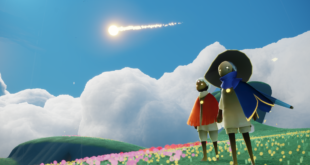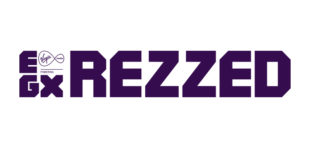Social gaming is seemingly dominated by the likes of Zynga and Facebook. Yet, with over 130m monthly unique visitors, Spil Games are no also-rans.
In March 2009, Spil was named the largest social gaming portal, according to figures by comScore across its 44 websites.
Spil was founded in 2004 by Dutch entrepreneurs Peter Driessen and Bennie Eeftink.
The company has distilled its localised websites for three target demographics: girls, teens and families. Last week, the company announced a new activity feed feature for its social gaming portals intended to boost user engagement.
“We have transitioned into a social gaming platform specially catered for the needs of these kinds of audiences. That has been a huge transition for us,” says Spil Games CEO and co-founder Peter Driessen.
Develop recently met Driessen in London to discuss Spil’s current place on the social gaming map and hear how it plans to evolve as mobile becomes an ever important part.
Driessen says Spil’s social features have been important to the health of the business.
“It makes it easier for people who are likeminded, because they do love to play games. So, you could say, on Facebook you connect with your ‘real’ friends and here you connect with your likeminded friends.
“You need a platform where people can do that in a very easy way. So by having a portfolio, their own wall, connecting everything they’re doing in the games to that wall, users’ friends can see what they are doing and how they are behaving.
“And, moreover, we see with more social games going live, like pet games, farm games, just like the games you see on Facebook. You see that people in these kinds of communities are real hunger to make more friends. At this point in time, we’re seeing around 500,000 friend requests a day.”
Spil currently use their own application, Zapapa, within social networks, like Facebook, Hyves and VZ Networks, to connect web users to their Spil’s games.
When asked why Spil haven’t embraced the Facebook Platform, Driessen says he’s reluctant to give up control: “They can take away the virality or [mandatory enforce use of] Facebook Credits. You need a lot of marketing to make your games popular there, so it’s quite heavy.”
THERE ARE ALTERNATIVES TO FACEBOOK
“We have done some tests there and what we have learnt is that you really need to own the content to be very successful on Facebook. We are much more a publisher, than a developer. Our core competence is to build platforms.
“That’s how we decided where we need to invest. We saw the big uptake from social and Facebook, and we thought it’s better to develop our own social gaming platform instead of going on Facebook. Firstly, because we have a direct link to users, we’re not dependent on what Facebook is wanting, and, moreover, because we can build a much more consistent game experience and user experience.
“So if you look to GirlsGoGames, it’s all targeted at girls, the games they love and user-generated content, in such a way you can’t do on Facebook. I love the consistency which we can offer,” he says.
Because of Spil’s young target audience, Facebook’s age limit of 13 is another deterrent.
Driessen says lots of users find Spil’s portals via search engines and many more come directly to the domains. But with 11 million registered users out of the 130 million playing monthly, does he think social networks are needed to expand the business?
“It would be nice, but it’s not a necessity. Because what’s good about the Hyves platform is that we do have a kind of exclusivity to work there. We can really, again, in a consistent way, look at what kind of games people love to have. What you see, for example, within social networks, people do not only play farm games and fishing games, but also multiplayer games or even single-player games connected to the social graph.
“The problem is with single-player games, because they don’t have the same process to monetise them with items. You won’t find them within Facebook because developers can’t make any money out of them. But within our channels, and even within Hyves, it does add a lot to the user experience and the way people want to play.”
An area the company hasn’t shied away from is advertising partnerships, having worked with Disney, Universal and Justin Beiber on worldwide promotional campaigns.
“It’s because we are so well [placed] in reaching out to kids, and also to mothers, we have an audience who love to look at these advertisements on new films, like Hop, so it makes sense to build these relations.”
DEVELOPERS WANTED
Driessen studied business economics and psychology, and has continued to focus on human resource management as the foundation of his companies. He recognises that a confident and energetic team are at the core of every leading business.
And this philosophy extends to his approach to developers.
“We do want to reach out to a lot of developers around the world… Depending on the games, we licence their games. For example, for social game developers, we share revenues. Next to that, we also take care of the community management and payment integration, so we do offer a lot of service that they don’t need to do.
“We have people on board who do game optimisation per country. So, for example, in Poland, we look at what are important dates when we can bring special items into social games and tie it up to what people are wanting. And that’s, of course, easier for us to do because we know everything about the Polish market, the Brazilian market or the Dutch market, than compared to a Chinese developer.”
Established developers, like Playdom, aren’t only in Driessen’s sights, but indies too.
“What I like about indie games is they sometimes have a weird idea and something very cool that’s attractive to a younger audience. Nowadays, quality of games is not always in huge, in-depth gameplay, it also can be something that’s very funny and you can have a big laugh with that. That’s quality in my view as well.”
THE FUTURE IS HTML5
Consistency, the means to create multiplatform game experiences and the freedom to partner with an assortment of developers and advertisers worldwide are central to Spil’s goals.
Mobile is growing fast and Driessen sees HTML5 as the unifying key to Spil’s future.
“We are putting our bets on the HTML5 movement. We see the market developing very fast, because we’re not the only one believing that; parties like Facebook, Amazon and Google, are investing in HTML5. We believe that in a couple of years people will play more in the mobile browser than they will do within or through an app. That’s why we’re really pushing HTML5,” he says.
In September 2010, Spil held a Game Jam together with Google specifically for coding HTML5 games in 24 hours. Driessen says Google chose Spil because they were one of the first movers to support HTML5.
“We already have HTML5 games live, also in Hyves mobile, and we also tie these games into the social element of these mobile social platforms. That’s going well. But really we’re trying to invest a lot in getting more games into the channel, licensing more games and even looking for more studios to acquire which are developing these kinds of games.”
Driessen is confident that HTML5 will also be the catalyst for opening up new social gaming markets, via platforms like internet-connected TV: “We’re making ourselves ready to do so and HTML5 helps with that as well. Now we have to develop better games with much more depth, and then we can go into that scene as well.”
SPIL REMEMBERED
Spil Games’ three social gaming brands currently serve 19 languages. Although they’ve so far had limited reception in the US, in The Netherlands, Poland, Italy, France, Sweden, Middle America and South America they’re in a comfortable position.
Driessen says the reason Spil lead markets like Brazil and Ukraine is because they invested early in emerging markets. But as more competitors enter the social gaming market, he says Spil will be focusing on existing markets rather than spreading themselves thin across untapped niches.
“Nowadays, it’s not so much about working up to the amount of countries we’re in. So we do have some new markets, like Ukraine, which I think is really interesting. We’ve already built some big audiences in Indonesia and India, where we’ve grown fast. I think it’s much more interesting nowadays to be back in one market than to have too many markets, where you’re second or third. It’s much better to be the market leader.”
And he says, despite the rise of core games on mobile platform, they aren’t considering changing tact: “We will continue to cater to the casual player… more money can be made in the casual segment and in the MMO segment.”
Having changed significantly since 2004, Driessen’s foresight and leadership has served Spil well. On social games themselves, his vision is to “develop the best user experience for the specific target group, while connecting all these players with each other in such a way that it makes sense for them and gives them extra value out of that gameplay.”
Spil has made strides with its social gaming strategies, but its biggest challenge is one of scale.
Driessen admits that not having a trio of globally unified brands has slowed their social gaming portals in being globally recognised.
“What we see going forward is to scale these 44 websites back to three social gaming platforms, and create a brand around them. GirlsGoGames, that’s an easy one, but, if we look to the teen segment, we are looking to really create one brand around the world for teens. That’s something we need to invest for, but that’s a further goal.
“If I look three years ahead of now I really want to have three strong brands, one for teens, one for girls and one for families. With these brands it will be much easier to make that emotional connection, but also to enable people to remember it when they’re playing on any device they have at that time, be it the mobile, PC or television. We want to be remembered.”

 MCV/DEVELOP News, events, research and jobs from the games industry
MCV/DEVELOP News, events, research and jobs from the games industry



